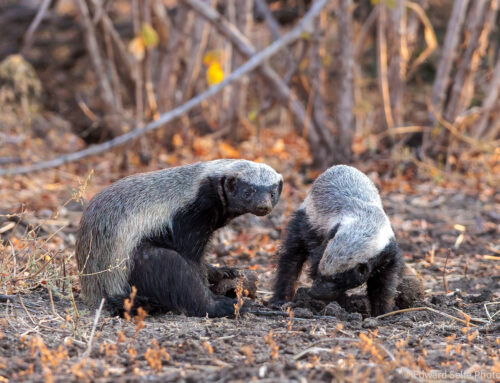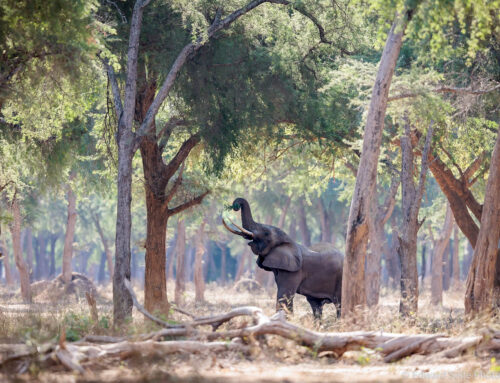I have just finished my last group photographic safari of the season. I still have a couple more short safaris in October – so there will be more updates from the increasingly dry Luangwa – but the main part of the 2017 season has passed! Having had such great trips throughout the year, I was nervous about whether the final trip would match up. As always, I start each safari with slight apprehension, hoping that I can show my guests the best that Luangwa has to offer; by the end of each safari, I always wonder why I was concerned! Luangwa is a superb wildlife destination and, over a week’s safari, always delivers the goods!
I was joined by many-times repeat guests Roger & Vicky Fry who took a year off from safari in 2016 so were raring to go! They were joined by Eric Williams and Jill Cooper who were (almost) new to safari altogether. Eric is keen and competent with his camera whereas Jill preferred to watch, observe and know that Eric’s photos will form the memories of anything she forgets!
We started off at Flatdogs Camp and set out with high hopes of catching up with Ginger the famous golden lion of South Luangwa. We found him on the first evening, although unusual cloud cover prevented his true colours showing through. However, he more than made up for this by roaring several times – once when we were very close! – which is enough to remind anyone that we are the visitors in this habitat!
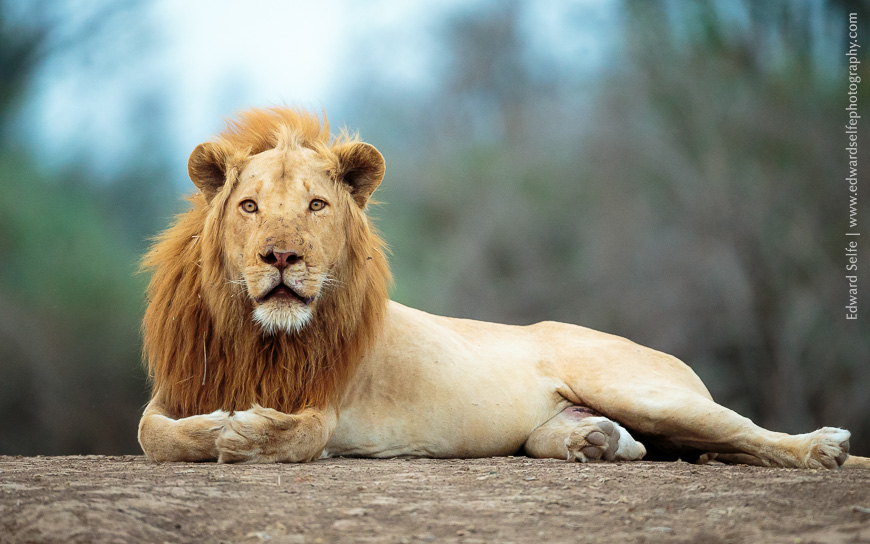
Lying on a bluff, we were able to get down below him, enjoying the chance to appreciate his size and magnificence!
One of the benefits of the central area of the park is that the game is more tame than in other areas. We are able to drive in amongst elephant herds and get closer to primates than we can elsewhere. One morning was stopped to watch these yellow baboons and shutters clicked frantically when one youngster decided to give another a ‘fireman’s lift”!
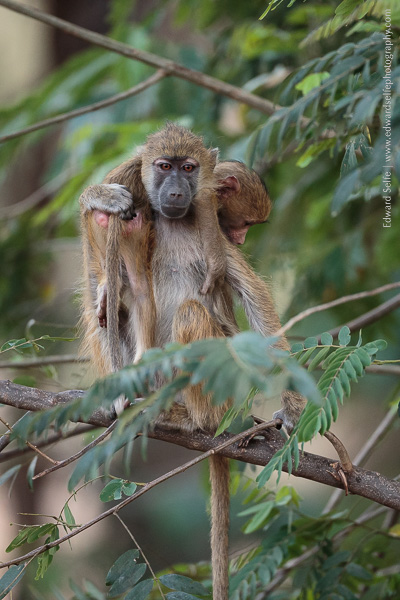
The second afternoon gave us our first leopard sighting – a female who is regularly found in the thick bush opposite Flatdogs Camp. She was resting on a termite mound, avoiding the worst of the heat, and eventually turned around so that we could take interesting shots of her; we balanced the ambient light with the spotlight to lift the shadows. She then climbed into a tree where she had stashed an impala carcass and we used the spotlight from another vehicle to back-light our subject.
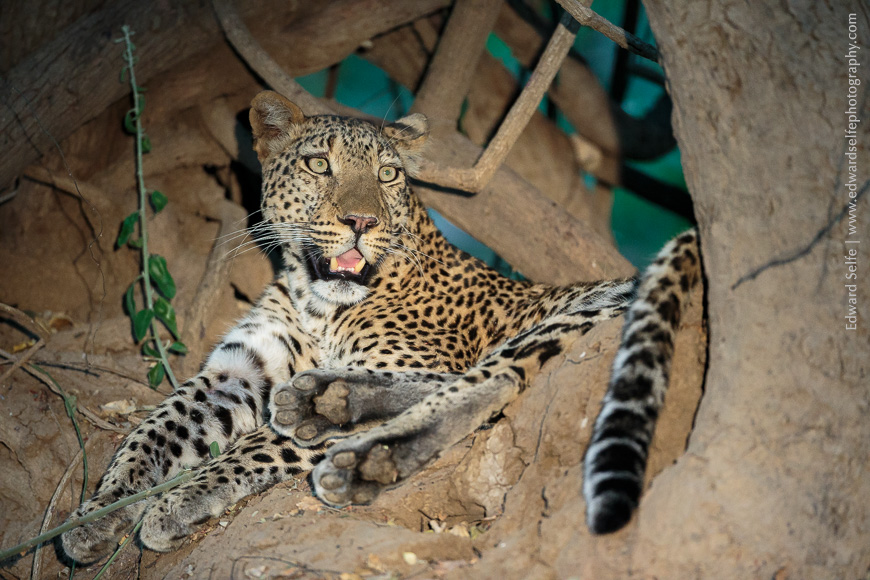
Using the edge of the spotlight, we filled in the shadows to create an evenly-lit scene.
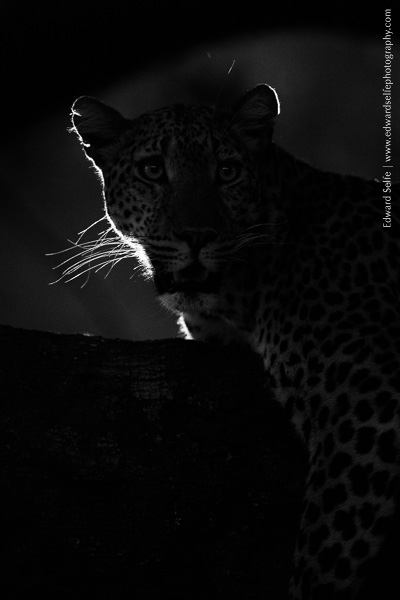
The highlight of our last morning at Flatdogs Camp was a pair of impalas whose gentle sparring suddenly became more serious and ended in a serious altercation, and a young baboon who posed like a model on a swinging creeper while the low morning light played through his fur.
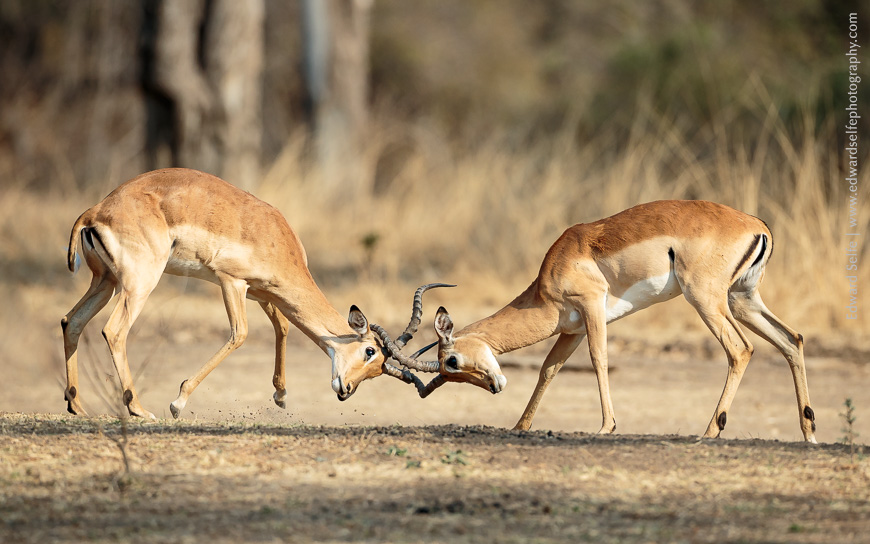
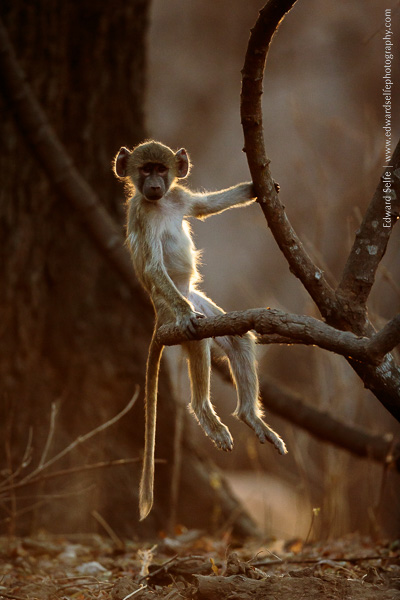
By underexposing 1.3 stops, I was able to maintain a rim-light on this subject without getting too much distracting detail.
As we headed back to camp, a small group of bull elephants were playing in the river, and we enjoyed them as they splashed in the shallow water.
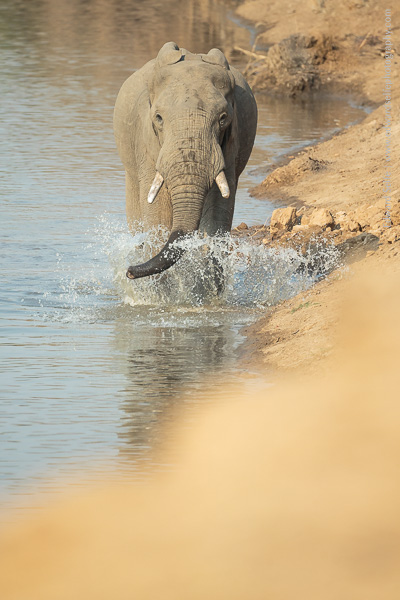
Including the blurred river bank in this shot provides a simple frame that matches the curved bank behind the elephant.
After lunch, we headed to Zikomo Safaris in the Nsefu Sector. Our high expectations of this excellent area were not disappointed! During our first afternoon drive, we spent some time playing with running impalas to create the right amount of panning blur – too much and they lose their shape and identity….too little and the image looks like a shot that was intended to be sharp, but wasn’t. I find that impalas running at full speed are best shown at 1/40 sec and I was very happy with this shot of one in full flight!
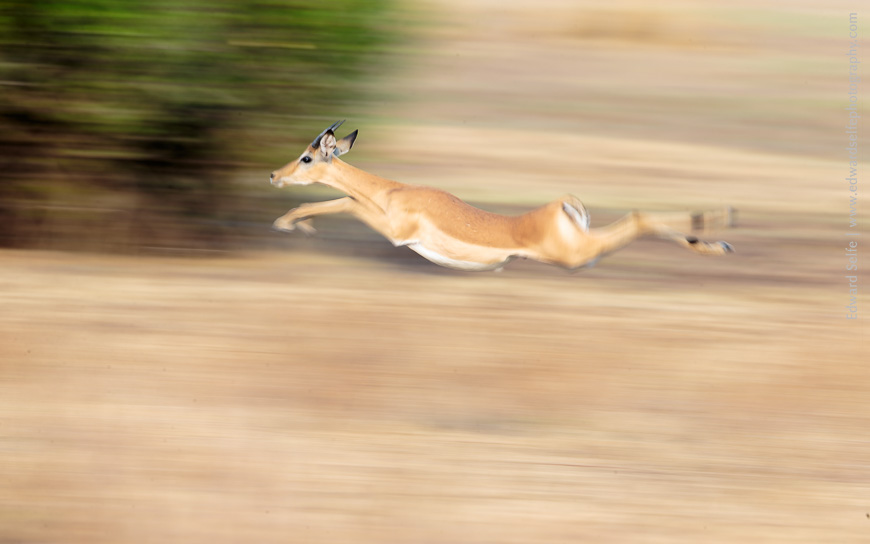
Using a manual mode, with 1/40 sec and f16 (balanced with Auto ISO) I was able to get a shot that conveys the impressive speed and agility of impala, the most abundant antelope!
Thereafter sightings came thick and fast, with a Genet in the evening and a fantastic sighting of a giraffe running through the shallow Luangwa the following morning.
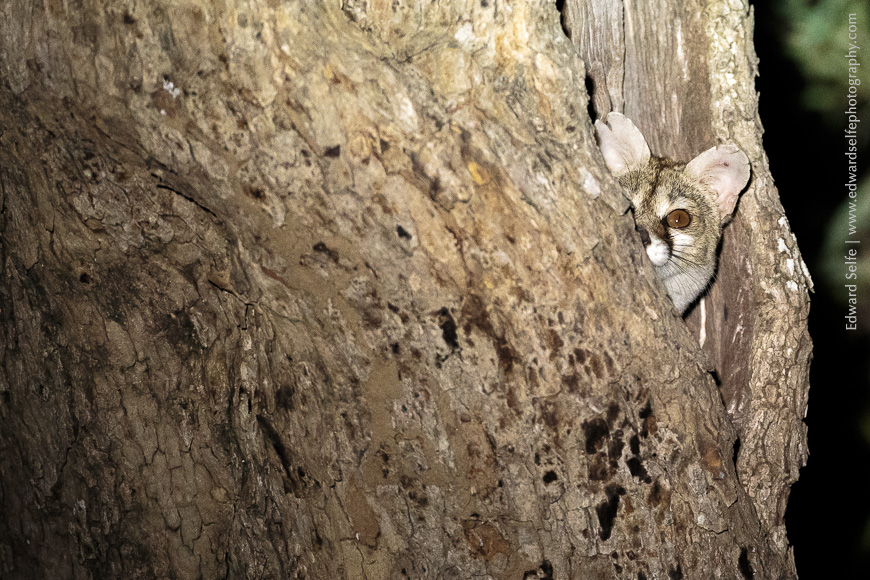
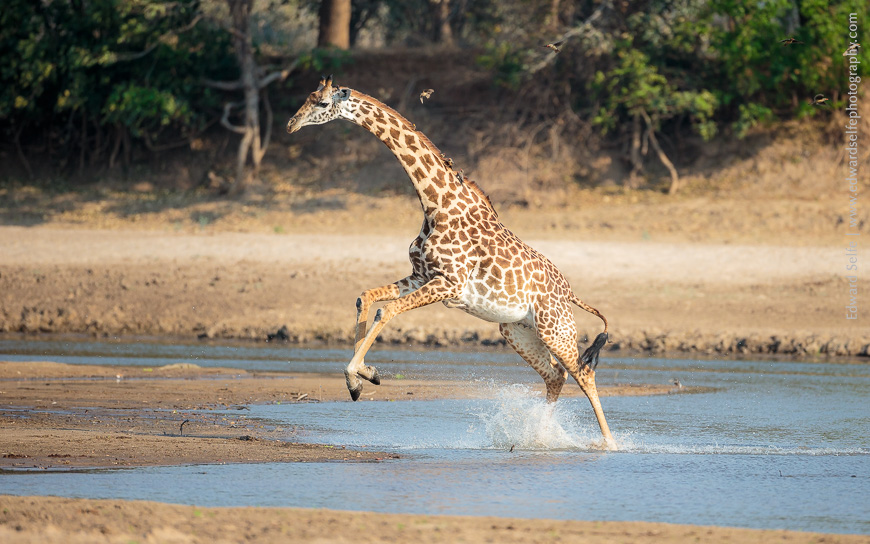
Momentarily marooned on a small island in the shallow water, this giraffe decided to rush to join the others of his herd, spraying water everywhere in the process!
The following afternoon, we went in search of the Wild Dog pack that I’d seen in the area the previous trips. I didn’t know if we would find them but we got lucky and found not only the pack, but also their 9 pups too! I had not before seen the youngsters out of the den, so this was a real treat. We spent around an hour with them as they adults regurgitated lumps of meat for the pups and the pups interacted and played. For a pack of 9 adults (although 2 adults recently left the pack) to rear 9 pups successfully is outstanding. We hope they will bolster pack numbers across the Luangwa when this year’s litter mature and disperse to form packs of their own.
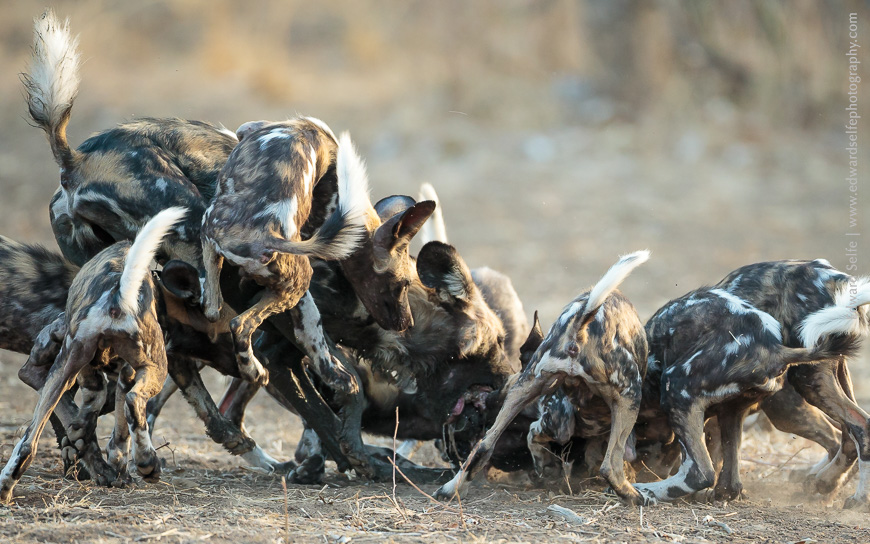
An adult wild dog regurgitates a lump of partly digested meat to the delight of the waiting pups.
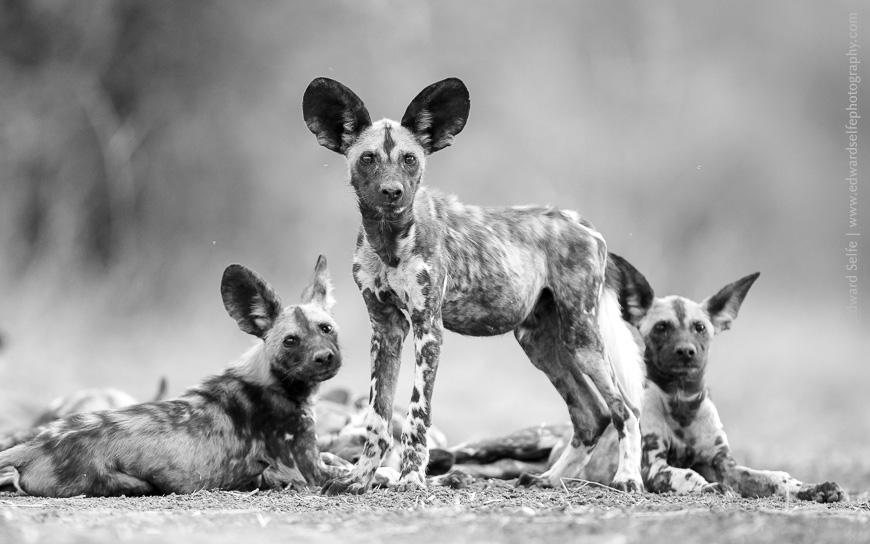
These creatures are intensely social – especially among litter-mates – often choosing to rest in close proximity.
Eric is a keen birder so I was very pleased when we found a Pel’s Fishing Owl one evening in a favourite spot overlooking the river.
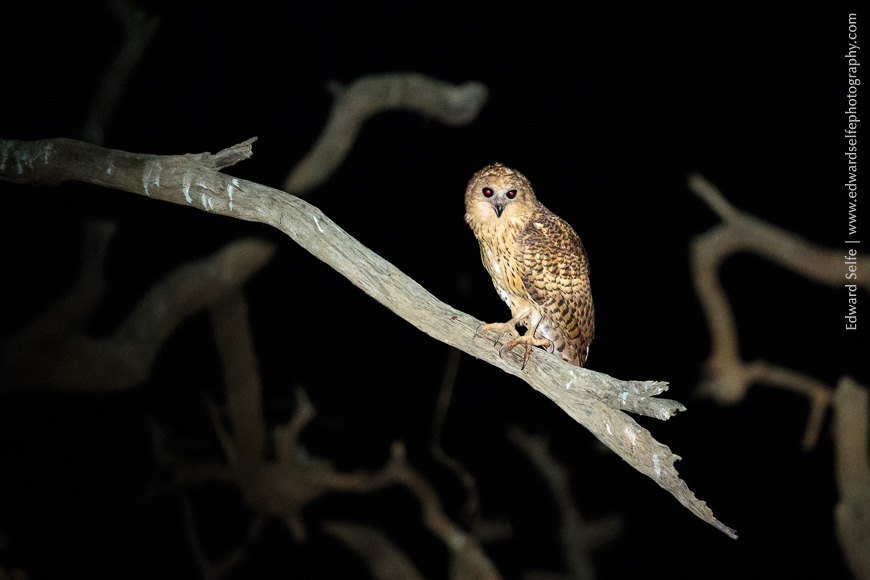
Some of the best sightings of the trip came in one afternoon when we headed north into the centre of the Nsefu Sector. We started off with some special time spent with a very relaxed herd of elephants who had a small calf with them.
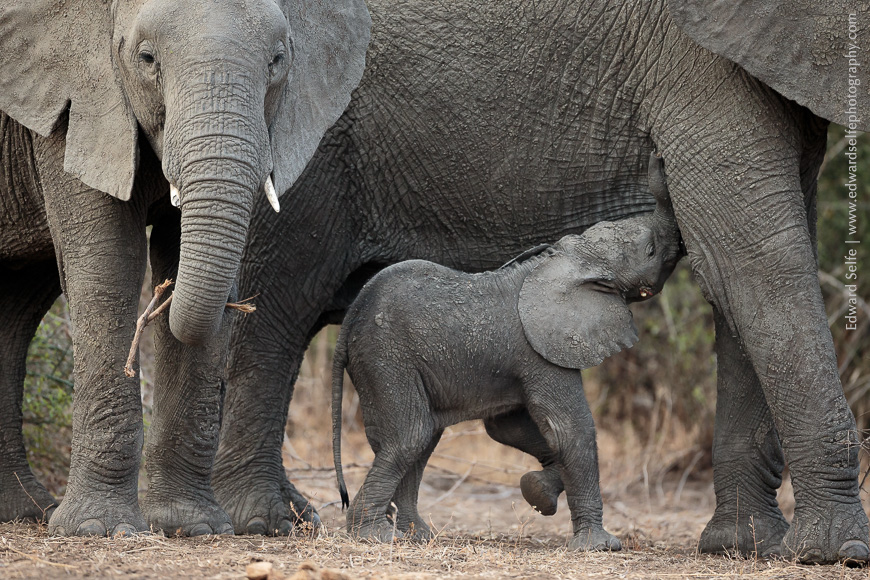
We spent a long period with this family, waiting while the calf turned around, fed and played with a twig. The light was soft – due to some high cloud – which avoided the harsh shadows that often develop under elephants’ bellies.
We continued, in search of a pack of wild dogs which live in that area, and found them resting under a thick bush. Agreeing to return later, we did so, and found them on the river-bank contemplating whether to cross the water! I have seen this pack cross over before (in mid September) but the waiting crocodiles proved too much for them this time around! However, the photo opportunities with the setting sun and the distinctive shape of the dogs were excellent!
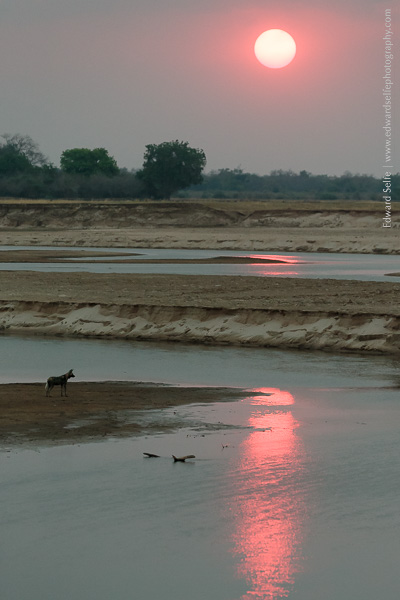
The pack climbed back up the bank and played in the dusk of evening. The light was poor and photographs were basically impossible, but we enjoyed spending time with the pack as they played and rolled in the soft sand. Sometimes it’s nice to put the camera down and take time to savour the moment – a vast wilderness, with beautiful surroundings and 5 of the 4,000 remaining wild dogs on the planet.
With a great sighting behind us, we set off to return to camp, but almost immediately, we found a lioness who was feeding on a freshly-killed impala! We had not known about the lion beforehand so it was a great surprise to find her. It was dark, but using the spotlight we took some shots of her feeding.
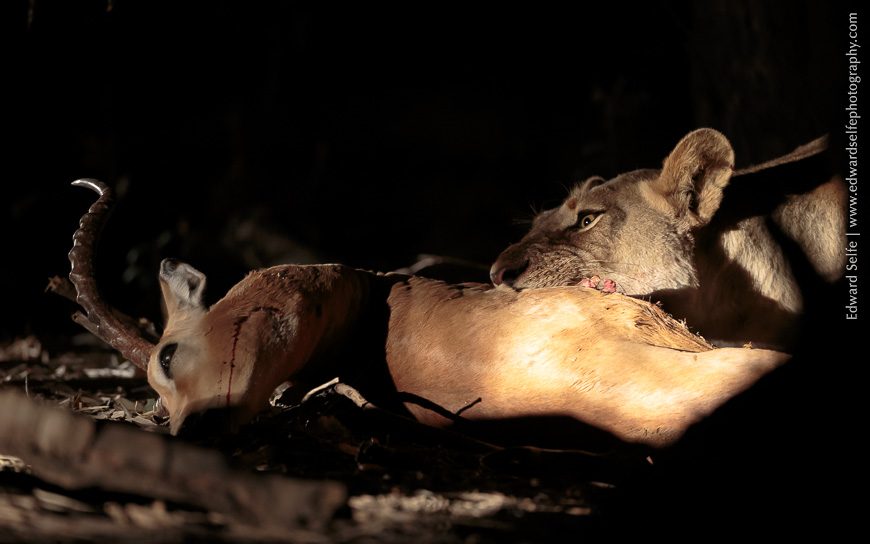
We wondered how long she might be able to keep hold of the carcass before other lions or hyaenas arrived to join. As soon as we thought about it, 3 more lionesses from the Nsefu pride arrived and they fed ravenously – and noisily – on the remains of the carcass.
As you see from the video above, the lionesses were feeding when suddenly a large male lion appeared and called aggressively to stake his claim to the kill. I have not seen that male before, and his legs were wet so I’m fairly sure that he came across the river when he heard the sound of the kill and the females feeding. With the river so low at this time of year, it is no trouble for lions to cross! This was a very exciting and dramatic sighting, which was tricky to photograph, but the sounds and the smell will remain with us for a long time!
The following morning, we decided to visit the Salt Pans in the middle of the Nsefu Sector. This is always a gamble as it’s hard to know what might be found there. On this occasion, we found a Tawny Eagle who flew obligingly, a pair of Crowned Cranes who were preening each other and beginning to show some courtship behaviour, and a herd of zebras who charged through the shallow water of the spring, splashing impressively!
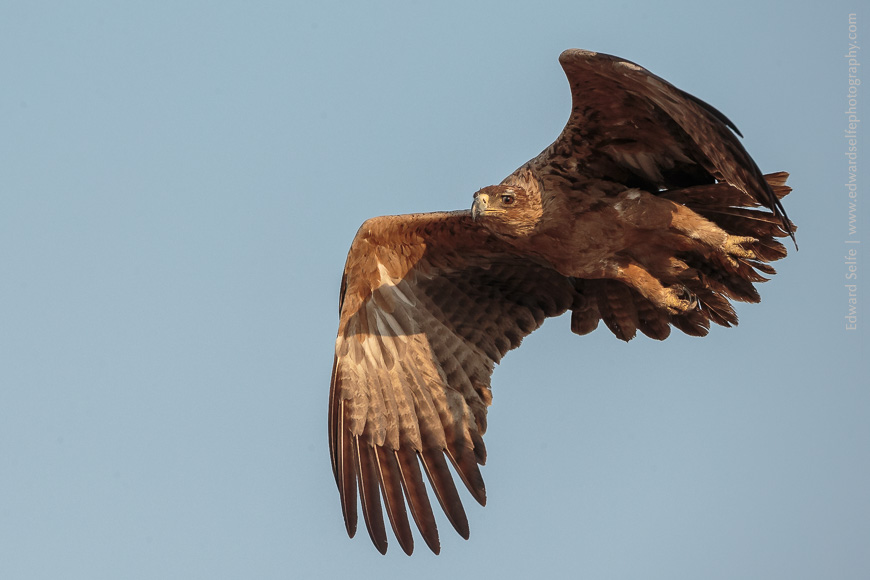
Using a fast shutter speed, and an over-exposure of +1, I was able to get a sharp image with lots of detail in the bird’s feathers.
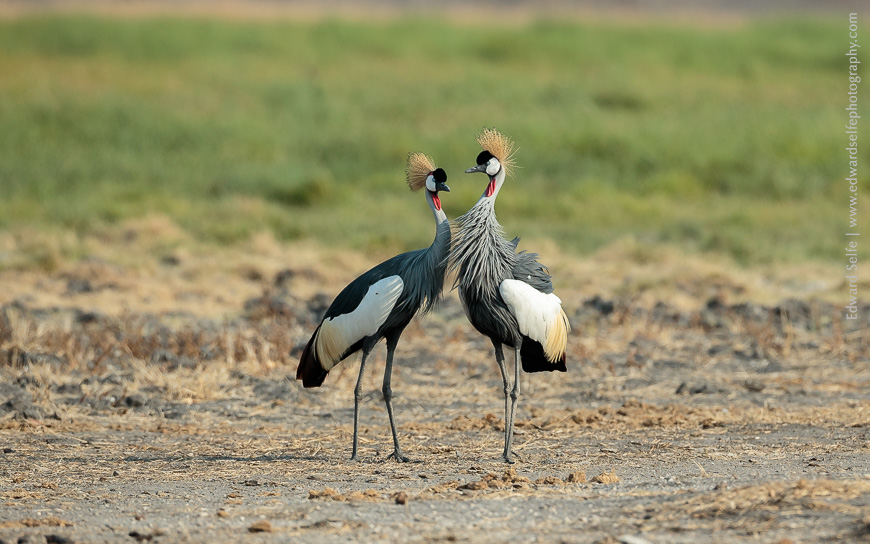
The cranes breed during the rains, but some pairs are starting to show courtship behaviour aleady, including this pair who were jumping occasionally and preening each other’s necks.
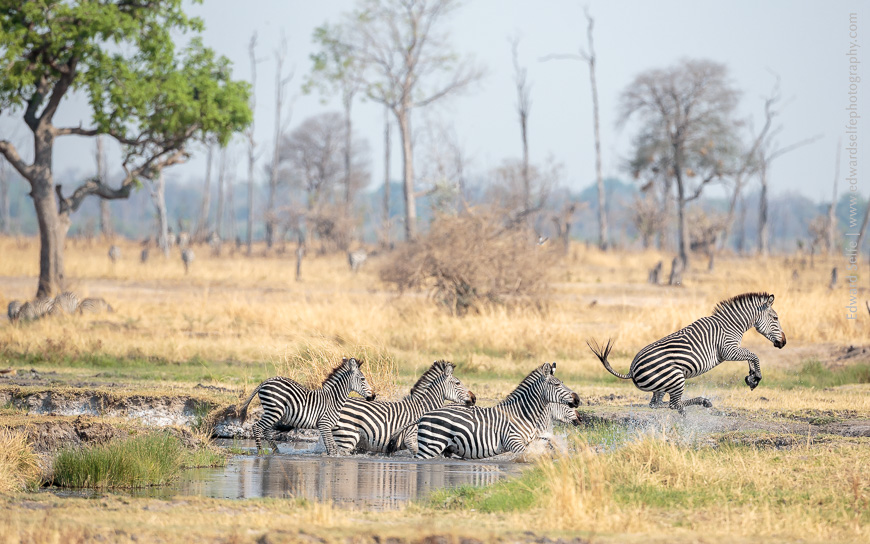
As we were leaving the springs area, I spotted a number of vultures landing in the trees in the grassland nearby. We approached and found that several hyaenas were circling a zebra carcass, but not approaching it. We suspected that lions had killed it, and perhaps moved on having eaten a large portion of the rump and insides. Over the next hour, we watched as the hyaenas moved in and began to feed, then the vultures followed and finally drove the hyaenas off! It was mayhem and absolutely magic to watch!
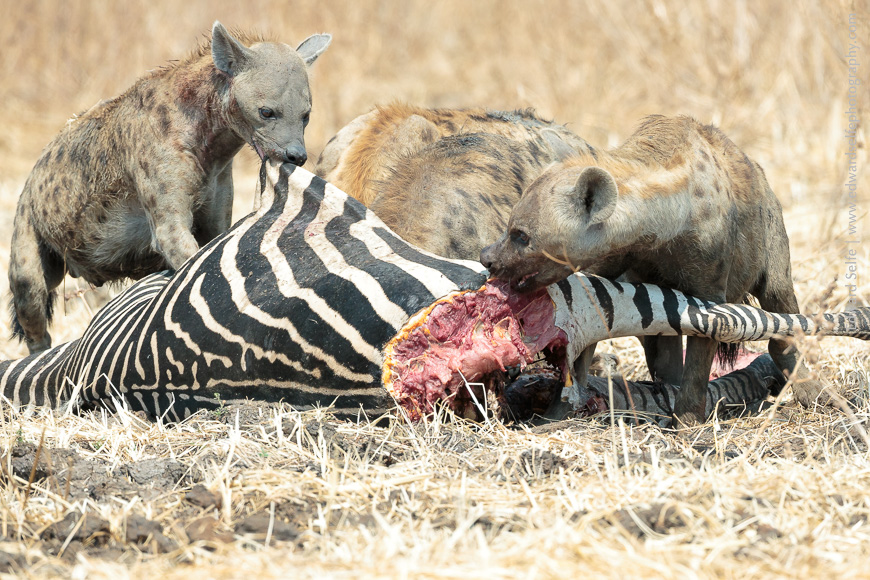
It could have been that the hyaenas killed the zebra, but if that was the case, we couldn’t explain why they were so cautious about approaching it. There was a large gash across the face of the zebra, suggesting that it had been killed by lions, but why had they abandoned it?!
Wondering how we could possibly follow such a day, we decided to visit one of the elephant crossing points on our last morning, finding an array of wildlife along the river including some lions which were chased into the bush by a herd of elephants! We settled down along the bank and let the scene unfold as giraffes and elephants came and went across the shallow water. Sitting somewhere quietly and waiting for nature to come is a very good way to end a safari, especially one that has been filled with drama throughout!
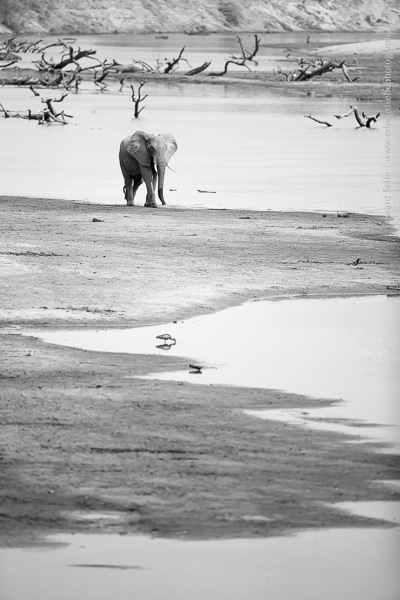
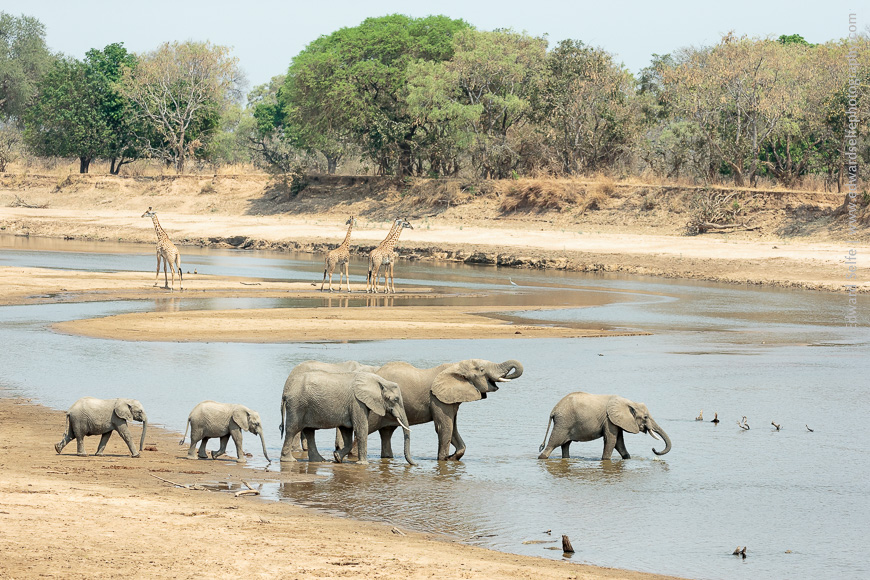
A week in the South Lunagwa always produces some really special sightings, and this safari was no different. Take a look back through the archives of Trip Reports on my blog and you’ll see why the South Luangwa is climbing up the wish-list of photographers everywhere!


